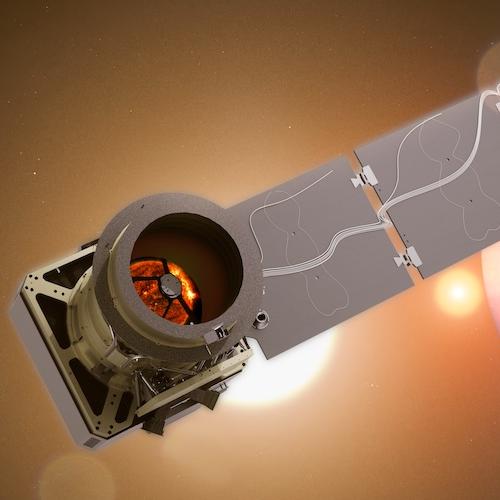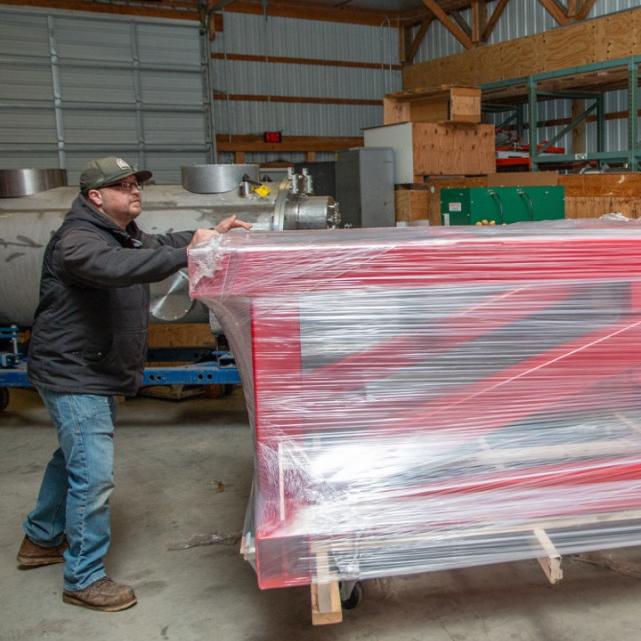Using light from the Big Bang, an international team led by Cornell and the U.S. Department of Energy’s Lawrence Berkeley National Laboratory has begun to unveil the material which fuels galaxy formation.
“There is uncertainty on the formation of stars within galaxies that theoretical models are unable to predict,” said lead author Stefania Amodeo, a Cornell postdoctoral researcher in astronomy in the College of Arts and Sciences (A&S), who now conducts research at the Observatory of Strasbourg, France. “With this work, we are providing tests for galaxy formation models to comprehend galaxy and star formation.”
The research, “Atacama Cosmology Telescope: Modeling the Gas Thermodynamics in BOSS CMASS galaxies from Kinematic and Thermal Sunyaev-Zel’dovich Measurements,” appears in the March 15 edition of Physical Review D.
Proto galaxies are always full of gas and when they cool, the galaxies start to form, said senior author Nick Battaglia, assistant professor of astronomy in A&S. “If we were to just do a back-of-the-envelope calculation, gas should turn into stars,” he said. “But it doesn’t.”
Galaxies are inefficient when they manufacture stars, Battaglia said. “About 10% of the gas – at most – in any given galaxy gets turned into stars,” he explained, “and we want to know why.”
The scientists can now check their longtime theoretical work and simulations, by looking at microwave observations with data and applying a 1970s-era mathematical equation. They’ve looked at data from Atacama Cosmology Telescope (ACT) – which observes the Big Bang’s static-filled cosmic microwave background (CMB) radiation – and search for the Sunyaev-Zel’dovich effects. That combination of data enables the scientists to map out the material around that indicate the formation of galaxies in various stages.
“How do galaxies form and evolve in our universe?” Battaglia said. “Given the nature of astronomy, we can’t sit and watch a galaxy evolve. We use various telescopic snapshots of galaxies – and each has its own evolution – and we try and stitch that information together. From there, we can extrapolate Milky Way formation.”
Effectively, the scientists are using the cosmic microwave background – remnants of the Big Bang – as a backlit screen that is 14 billion years old to find this material around galaxies.
“It’s like a watermark on a bank note,” said co-author Emmanuel Schaan, the Chamberlain postdoctoral fellow at the Lawrence Berkeley National Laboratory. “If you put it in front of a backlight then the watermark appears as a shadow. For us, the backlight is the cosmic microwave background. It serves to illuminate the gas from behind, so we can see the shadow as the CMB light travels through that gas.”
Together with Simone Ferraro, divisional fellow at Lawrence Berkeley, Schaan led the measurement part of the project.
“We’re making these measurements of this galactic material at distances from galaxy centers never before done,” Battaglia said. “These new observations are pushing the field.”
In addition to Battaglia, Amodeo, Cornell researchers include doctoral students Emily Moser, Victoria Calafut, Eve Vavagiakis; Steve K. Choi, National Science Foundation postdoctoral fellow at the Cornell Center for Astrophysics and Planetary Astronomy; Rachel Bean, professor of astronomy and senior associate dean in A&S; and Mike Niemack, associate professor of physics and astronomy in A&S.
The ACT team is an international collaboration, with scientists from 41 institutions in seven countries.
In addition to the National Science Foundation’s Atacama Cosmology Telescope, the work was supported by the Baryon Oscillation Spectroscopic Survey in New Mexico, where the Berkeley Lab played a leading role; the European Space Agency’s Planck telescope and the Herschel Space Telescope; and the Cori supercomputer at Berkeley Lab’s National Energy Research Scientific Computing Center.
A National Science Foundation Astronomy and Astrophysics research grant funded the research.






